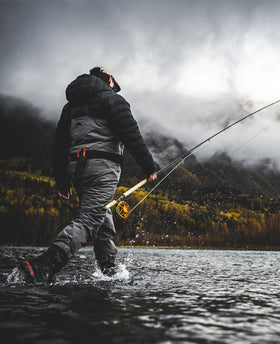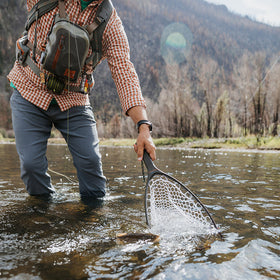
Steady, As She Goes: The Raconteurs. Great song that perfectly describes this week’s weather, steady and stable. We like stable conditions because it typically leads to stable fish activity, so expect fishing conditions to be great this week. Although winter is typically the time to find solitude, the Front Range rarely has a moment of solitude, particularly when the weather is in the 50’s in December. Sigh. Oh well, at least the fish will be happily eating midges! I know I’m going to sound like a broken record but midges are the only hatch currently available, aside from Pueblo where BWOs are still hatching. Flows are low throughout the state and likely will be throughout the winter, my guess is the water owners across the state are preparing for a small snowpack and are trying to create a reserve for next year. Whether they’re right or not, it sucks that we have to fish in such little water. Low flows could lead to an increased ice build up this winter, in years prior we’ve seen many times where low flows resulted in a lot of shelf ice throughout the Deckers area. Let’s hope this isn’t the case this year, but judging by the past it’s likely to occur. Enough of my hooting and hollering though, let’s talk about some flies for this week.
#1: Fish Skull Barely Legal - Grey/White sz4
An articulated streamer has finally made the list. Throwing streamers is honestly one of my favorite tactics during the winter because no one else is doing it. Most people think you can only throw streamers in the summer and fall, and I think that is way off. In fact, I think the winter is the best time to throw streamers for one big reason, the lack of food around. Smaller fish can certainly fill themselves up on midges, but the big fish simply cannot eat enough midges to sustain their health. Even with cooler water conditions, bigger fish will certainly not pass up on a big meal to help get them by during the cold months. I preached in my streamer fishing series that moving your streamer relatively fast picks up more eats. This is true, but not so much in the winter. Nothing in the river is moving fast and a big trout doesn’t want to burn a ton of energy chasing something down that they potentially might not get. Instead, I’ve found it best to fish your streamer as if it were a dying baitfish, low and slow. Jig it, strip it, dredge it, whatever. Just be sure to be moving relatively slow with a few erratic twitches. We like this particular streamer for the current conditions because the fish skull provides a very realistic presentation with a good amount of weight to fish deeper water. I like this coloration scheme a lot, particularly for winter. I don’t have any technical explanation for it, but I’ve found that the lighter colors seem to turn fish more effectively in the winter.
#2: Tungsten Zebra Midge - Zebra sz22
The classic zebra midge is back on the list for good reason. This midge pattern has stood the test of time, and honestly most midge patterns today are just variations of the zebra. It flat out works. The zebra midge can resemble a larva or a pupa and can be fished anywhere in your rig, depending on the size. The smaller sizes do a better job of imitating the pupae, while the bigger sizes do a better job of imitating the larvae. Although the amount of tungsten on this pattern isn’t a ton, it’s enough to help get your rig down. Any amount of weight put into your flies is going to help in the long run. Split shot makes a lot of noise that spooks fish, so the less we have to use, the better. Although it’s not as realistic as other midge patterns out there, it’s close enough to fool a fish. So much so that the zebra midge has caught the most fish out of any midge pattern available.
#3: Midge - Cream sz22 (In Store Only)
The dry fly that’s so good it’s only called midge. The midge is another classic pattern that has withstood the test of time. Perfectly resembling a single adult midge, this fly is perfect for picky winter risers. Dry fly fishing should be phenomenal this week due to the relatively warm conditions. Warmer temperatures typically lead to thicker midge hatches that will persuade more fish to rise for the adults. The cream coloration seems a little different, but this is done intentionally to differentiate your fly from the naturals. Midge adults are often black, but many are cream, olive, brown, and even chartreuse. The cream color also does a great job of being a “hi-vis” pattern, but without a bright fluorescent tag that the fish could potentially see.
Best of luck on the water this week and we hope these flies catch a fish or two for ya. Two of the three flies are available on our website, but all are in the shop. If you have any questions or concerns, feel free to reach out to Xavier on email at xavier@goldenflyshop.com, or call the shop at 303-330-1292. Thank you!





